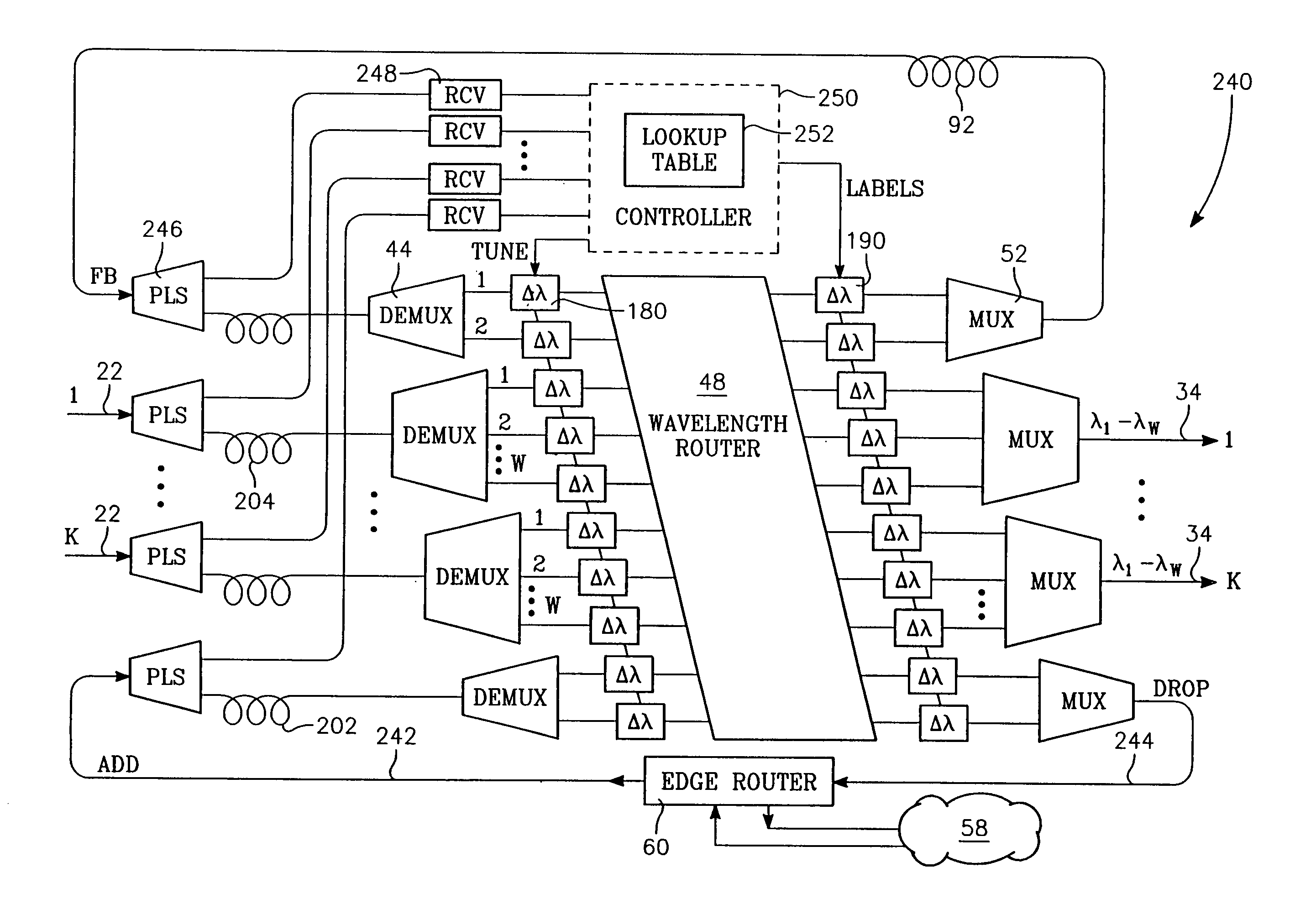Edge router for optical label switched network
a technology of optical label switching and router, applied in data switching networks, multiplex communication, digital transmission, etc., can solve the problems of consuming 400 kw of power, requiring 54 bays of electronics weighing 400 kg, and unable to scale well with increasing the number of wdm wavelengths, etc., and achieves high throughput.
- Summary
- Abstract
- Description
- Claims
- Application Information
AI Technical Summary
Benefits of technology
Problems solved by technology
Method used
Image
Examples
Embodiment Construction
[0047] Although the conventional IP architecture has proven successful in electrical networks and point-to-point fiber networks in which electronic routers are readily and economically available, a more scalable IP network in the future is expected to involve optical label switching (OLS) concentrated in a core network 50 illustrated in FIG. 5, in which optical routers 52 are interconnected by multi-wavelength optical fiber links 54 and can switch packets between the links 54. The optical routers 52 are typically closely associated with edges of the core network 50 and can additionally switch the packets to client networks 58 through edge routers 60. The edge routers 60 are connected to the core network through edge links 56 and to the client networks 58 through client links 62. It is not unusual to have more than one client network 58 or super user 58′ connected to a single edge router 58 at a major entry point to the core network 50. The client networks 58 may be IP networks havin...
PUM
 Login to View More
Login to View More Abstract
Description
Claims
Application Information
 Login to View More
Login to View More - R&D
- Intellectual Property
- Life Sciences
- Materials
- Tech Scout
- Unparalleled Data Quality
- Higher Quality Content
- 60% Fewer Hallucinations
Browse by: Latest US Patents, China's latest patents, Technical Efficacy Thesaurus, Application Domain, Technology Topic, Popular Technical Reports.
© 2025 PatSnap. All rights reserved.Legal|Privacy policy|Modern Slavery Act Transparency Statement|Sitemap|About US| Contact US: help@patsnap.com



